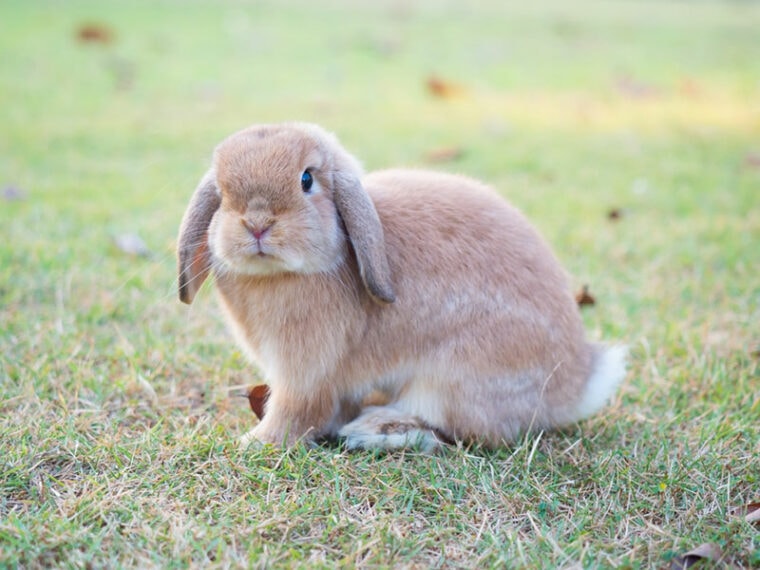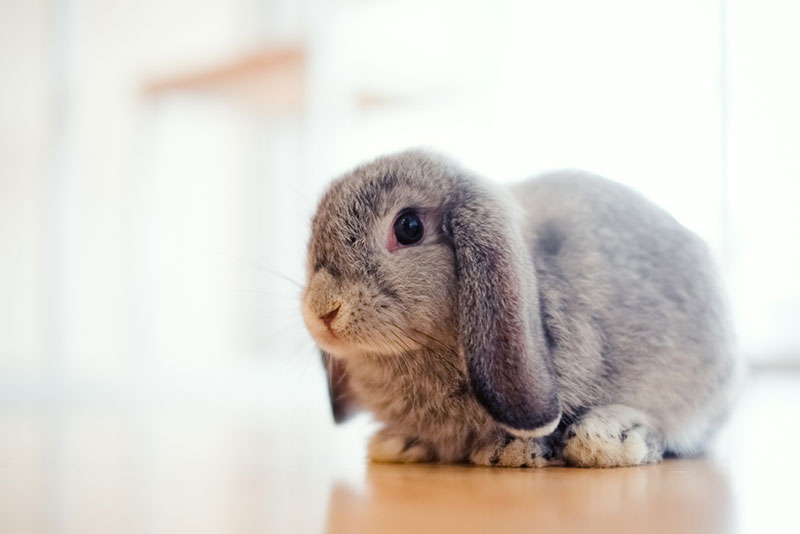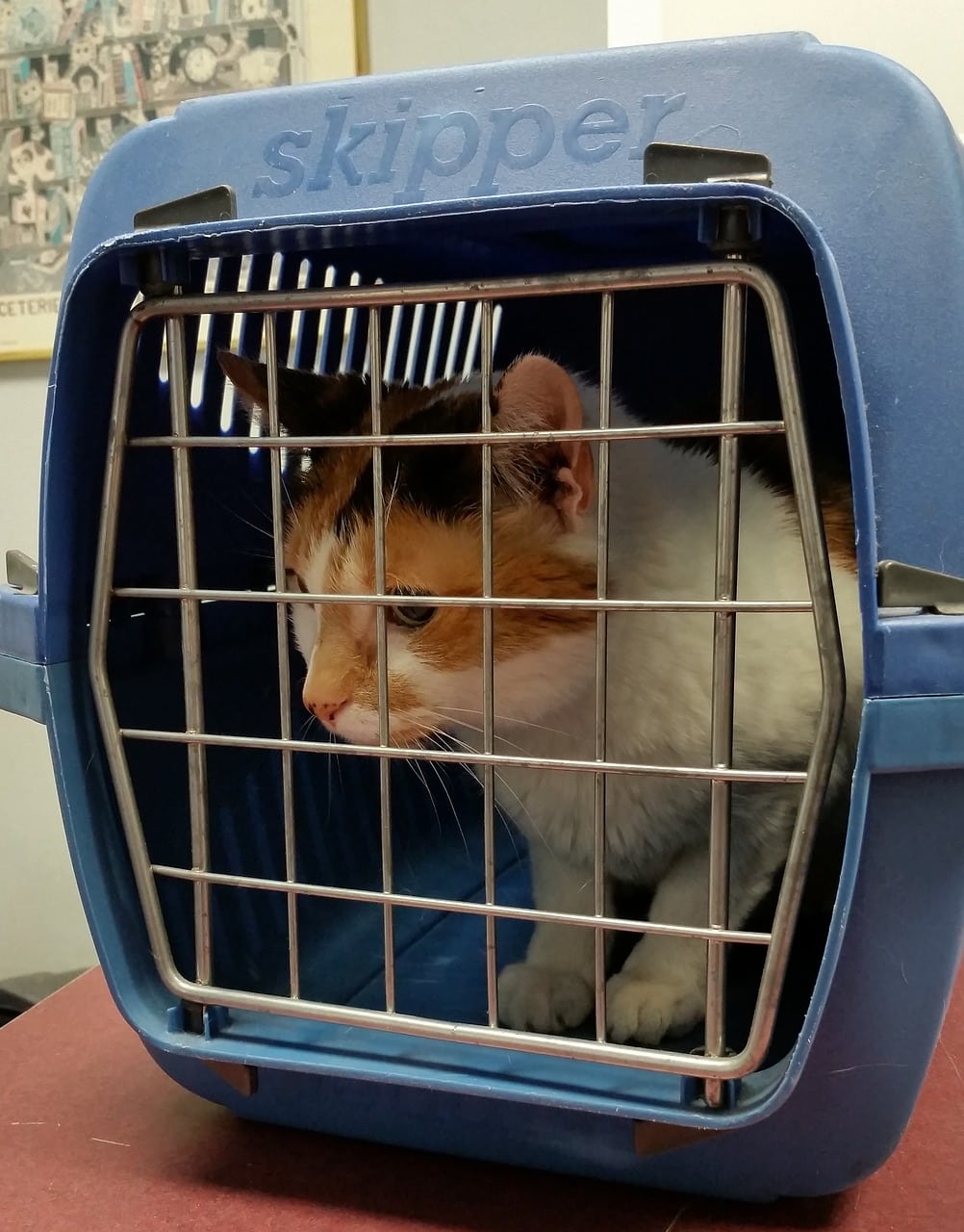
Cats and rabbits could not be further apart. A rabbit is a prey animal designed to run, jump, and perform acrobatics to escape predators. On the other hand, the cat is a fine-tuned killing machine capable of hunting prey for vast distances and using an arsenal of deadly weapons.
So how on earth do they get along!? The fact is cats and rabbits can sometimes get along, and some can even become friends if introduced at a very young age and gradually, but there is also a high risk of things going very wrong.
The key to a long-lasting (and safe) coexistence and tolerance between your cat and rabbit is to make sure the rabbit is kept securely away from the cat so both animals can have a happy, safe, and stress-free life.
Read on to discover exactly how to keep both pets safely in the same household, and how you could try to gradually introduce them safely with our six great tips. You should only attempt to introduce them in a way the animals cannot interact directly, with one or both of them in a secure crate, but only do so if you have experience with the species and in accordance with your vet’s advice.
Important Considerations
Remember, directly introducing a rabbit to a cat is a dangerous process that we at Pet Keen discourage, as it may often result in the rabbit’s injury and death, and should never be pursued without previous experience with both species, veterinary and behaviorist advice, and a controlled and safe environment. Do not attempt this before speaking to your vet and ensuring all the safety precautions have been met.
These tips are merely a brief guide, and are not a replacement for direct veterinary or behaviorist advice, and they may not be successful in your case. The safest way to keep both species healthy and happy is to avoid them interacting completely, ensuring your rabbit is in a secure enclosure and in a part of the home the cat cannot access.
For those readers who would still like to attempt introducing the two species, accepting responsibility for all the possible risks associated with this, please refer to your veterinarian and use our tips as a general guide only. We acknowledge there are cases of true friendships between the species, but these are rare and rabbit’s safety comes first.
Before You Begin
Remember that rabbits are prey animals. Most rabbits aren’t used to cats and frequently get stressed when they can see or smell them because cats are predators that can hunt rabbits if they get the opportunity. Keep a close eye on your rabbit’s body language; if they get stressed, remove your cat immediately from the room. If this happens again, it is not worth putting your rabbit through such a stressful experience, as it’s unlikely that they will ever feel relaxed and safe around a cat, even when they are in their crate and the cat is in the box.
We recommend introducing your cat and rabbit together in one brief session. Keep them fully separated by keeping your rabbit in a hutch or cage and your cat in their carrier box. Remember to be flexible and adjust to both their needs as necessary.

The 6 Tips For Introducing A Cat To A Rabbit
1. Use Common Sense
If you just let your cat into the room where your rabbit is happily bouncing around, it’s fair to say that’s irresponsible and tempting fate. Because cats are predators, they’ll likely find the darting movements of a rabbit very attractive and begin to chase them. Rabbits are prey, so they’ll bolt or freeze in fear as soon as they see a cat enter the door.
Throwing your cat and rabbit together will end in stress for them at the very least and tragedy at the worst; using your common sense and introducing them properly can ensure the worst doesn’t happen. This keeps your cat safe, too, as some rabbits can grow much bigger than the average cat, and their hind legs can cause damage!
2. Make Sure Your Rabbit Is Secure and Safe
When introducing your rabbit and your cat, make sure your rabbit is in a calm, secure space. If they have a hutch or cage indoors, keep the cage doors locked and the room around them quiet. Rabbits get easily overwhelmed, so giving them the option of hiding and retreating from the interaction if they want to is helpful.
Ensure their cage is cat-proof in case your cat escapes their box and decides to try their luck, and keep the room free of distractions. Once your cat has been placed in a neutral room in their own box, reassure them and your rabbit in a calm, quiet voice. Helping your rabbit feel safe when first seeing your cat can temper the initial stress and help build a good foundation for future meetings.

3. Control the Interactions
Positive associations are vital in getting your rabbit and cat to spend time together. Keeping the interactions between them positive means keeping the event as stress-free as possible while giving each animal something they like and benefit from.
For example, giving your cat a yummy treat and your rabbit a piece of their favorite vegetable when they’re going to be in the same neutral room for the first time can help them associate each other with something positive. Start by placing the treats down far from the crate or box door (on both sides).
Then, as your pets get more used to each other, slowly move the crates closer and closer together. This step may take months, so be patient. Just don’t be surprised if they don’t eat their treats right away! Be consistent with the treats, and your bunny and cat will expect something positive to happen when they’re in the same room each in their own box, and will happily eat while being close by.
One major downside of this method is that the cat may associate the rabbit’s presence with rewards and tasty treats, and may seek to be around them more than is ideal, or that the rabbit will tolerate. Here you need to establish a good balance, particularly for the rabbit, in ensuring both animals are comfortable.
Introducing kittens tends to work better than older cats, as your rabbit may be able to establish dominance over a younger cat and teach them not to consider them prey.. But still, animals are unpredictable, and even cats that have been living with rabbits for a long time may suddenly get the hunting drive and consider them prey. Female rabbits can be more territorial and may exhibit aggression towards the kitten and cause them injuries.

4. Don’t Rush Things
Patience and consistency are the most critical parts of rabbit and cat introductions. Ideally, cats and rabbits should be well-socialized with each other when they are very young. However, if you rush the procedure, you risk creating a traumatic event for both your pets which could harm any future meetings.
By taking your time and allowing your rabbit and cat to become familiar with each other, you stay in control of their stress levels and can keep the relationship on the right track. Let them adjust to each other at their own pace, and never force them together. And if it’s not working, it’s not working.
With time, especially if you have a kitten, you may keep them in their box or crate, while you let the rabbit out of their hutch, But don’t force the rabbit out, let them take their time. This way the rabbit can choose to come closer, or not, and always has their hutch to get back to for safety.
Likewise, don’t show your cat and rabbit one another, then leave them alone. That is asking for a tragedy and can end up with either party seriously injured or, in your rabbit’s case, potentially even killed, as cats are good at finding their way out of a box. “Best case,” they will still cause the rabbit a great deal of stress and fear.
5. Use Scent Swapping
Scent is an important part of communication for many animals, including cats and rabbits. Another good way of helping your cat and bunny get along is by swapping scents between them. Place a small, clean rag in your bunny’s enclosure (or take a small piece of their favorite blanket) and let them play with it to mark it with their scent, then do the same for your cat.
Once each animal has rubbed their scents on the cloths, swap them. Place the cat’s cloth in the neutral room where you will place the rabbit’s hutch, and vice versa. It’s more important to introduce the scent very gradually for the rabbit than it is for the cat. The rabbit will be more stressed with a predator smell than the cat will. After they get used to it, move the scent closer to the hutch and let the rabbit out, so if they wish to, they can smell it. Add a treat, allowing your pets to familiarize themselves with the other’s smell while munching on a tasty snack. This reduces stress levels when they get into the same room in their hutches and boxes and builds a positive association.

6. Recognize Stress
Lastly, it’s essential to recognize the signs of stress in your cat and rabbit. There will likely be tension during the introduction, but if you notice any signs of moderate to severe stress, take a step back and start again, or consider stopping the process altogether. Stress in bunnies, both acute and chronic, can have long-term consequences on their health and wellbeing, so this needs to be avoided.
Signs of Stress in Rabbits
The signs of stress in rabbits can be subtle, but recognizing them is crucial. Rabbits can get sick if they get too stressed, and they can lose their appetite and stop eating. This causes a painful condition called gut stasis, which occurs when the rabbit’s gastrointestinal tract slows down. It can be fatal if not treated.
Signs of Stress in Cats
Cats may also become stressed when interacting with a rabbit for the first time. Anything that breaks their routine or enters their territory can be seen as a threat, so your cat may get stressed or afraid when encountering your rabbit.
Cats that are stressed can suffer from physical manifestations of this, including cystitis. In male cats, in particular, cystitis can lead to blockage of the urethra and is a medical emergency.

How Will I Know My Cat & Rabbit Get Along?
Just like there are signs that your cat and rabbit aren’t getting along, there are signs that your cat and bunny tolerate one another. The more subtle signs of this are seemingly ordinary, such as your bunny playing with their toys near your cat or your cat stretching out for a snooze near your rabbit.
For some cat and rabbit pairs, tolerating one another is as good as it’ll get. On the other hand, some kittens and rabbits may create a bond and will sleep together and groom one another. Friendly behavior is more common with cats and rabbits introduced to each other at a very young age, and confident rabbits pair better with calm and mellow cats. But never leave them unsupervised or directly together, without a box or crate between them, as these kinds of friendships are rare, and the risk of something going wrong is unfortunately high. We wouldn’t want your bunny getting injured by the cat, as this may happen even after months or years of tolerant and even friendly behavior between them. This is the exact reason why we discourage such attempts at bonding, and if you decide to go down this route, be aware of the risks you are taking for your bunny.
Conclusion
Cats and rabbits can learn to tolerate each other, but how well the introduction goes depends on their personalities and the time spent introducing them properly. Taking it slow and ensuring your bunny and cat feel safe at all times is vital, as well as reducing stress and keeping interactions positive. They should never be left alone, and it would be best that the cat is always in a box, allowing the rabbit to set the rules. Remembering the two pet’s natures can help you introduce them in a thoughtful and caring way, which will hopefully lead to a long-lasting, safe tolerance between them.
Featured Image Credit: Arlee.P, Shutterstock







